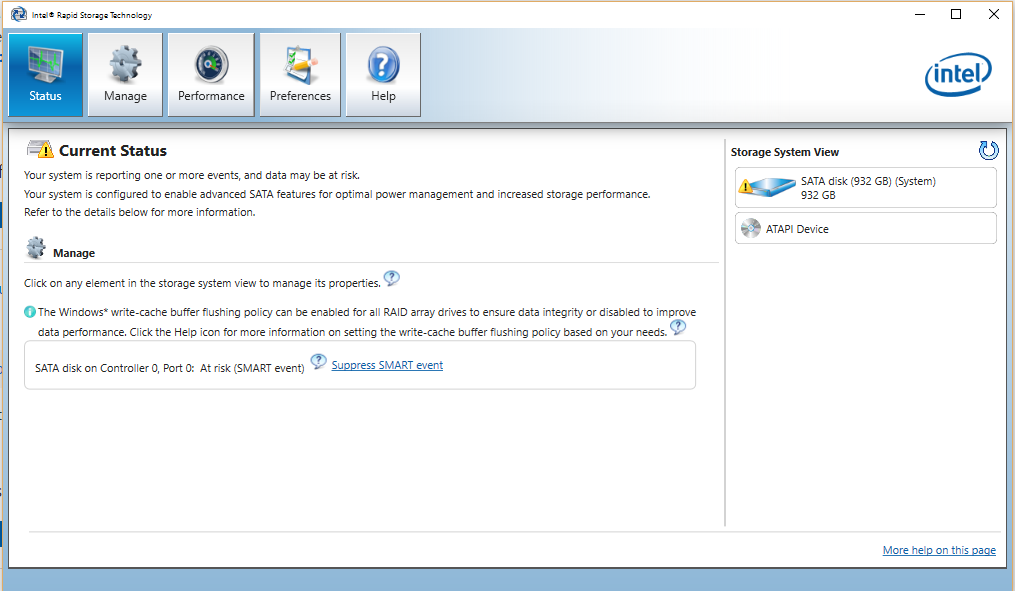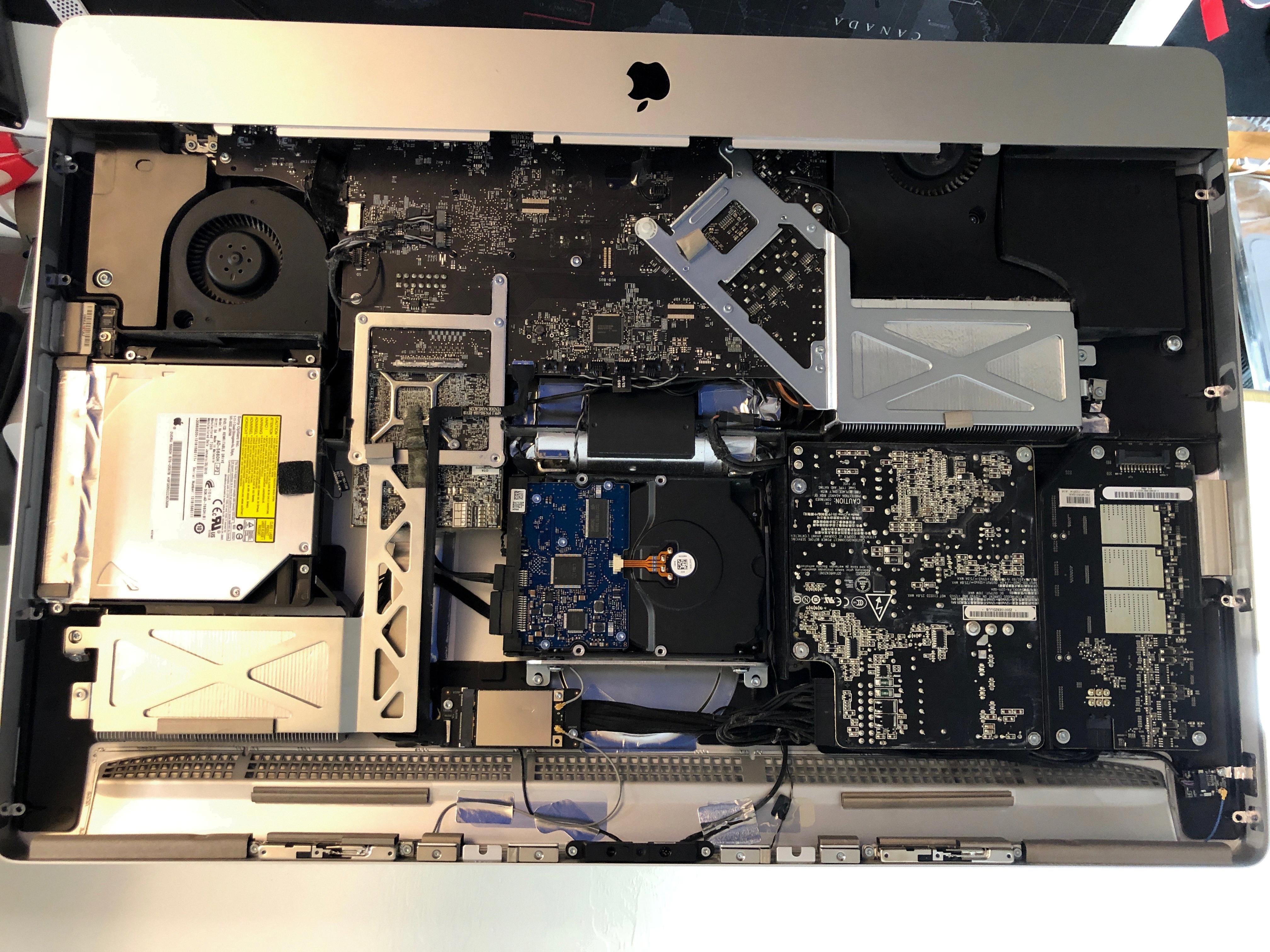Intel Rapid Storage Technology (RST) is a solution built into a range of Intel chipsets that provides improved performance and reliability for computers equipped with SATA disks. This technology offers the combined performance and features of HDD and SSDs, making it much more reliable than other technologies.
In platforms that have RST support built and enabled in the computer’s BIOS, it allows users to group and manage multiple hard disks as single volumes. This functionality is known as the Redundant Array of Independent Disks (RAID).
RAID provides several benefits, including increased reliability, better performance, and improved data access. RAID levels include RAID 0, RAID 1, RAID 5, and RAID 10.
RAID 0 offers improved performance by stripping data across two or more disks, while RAID 1 provides data redundancy by mirroring data across two disks. RAID 5 offers both performance and data redundancy by stripping data across three or more disks and using parity data to recover lost data if one disk fails. RAID 10, also known as RAID 1+0, combines the benefits of RAID 0 and RAID 1 by mirroring two striped sets of data across multiple disks.
Intel Smart Response Technology (SRT) is an Intel RST caching feature that improves computer system performance. SRT allows you to configure computer systems with a Solid State Drive (SSD) used as a cache memory between the hard disk drive and system memory.
When an application requests data, SRT checks if the data is already stored in the cache. If it is, the data is retrieved from the cache, providing faster access times. If the data is not in the cache, it is retrieved from the hard disk drive and stored in the cache for future use.
SRT is compatible with most SSDs and hard disk drives and can be enabled by accessing the Intel Rapid Storage Technology user interface. SRT is particularly useful for systems that require fast boot times, faster application loading times, and improved overall system performance.
Intel Rapid Storage Technology and Intel Smart Response Technology provide improved performance and reliability for computer systems equipped with SATA disks. These technologies offer advanced features that allow users to manage multiple hard disks as single volumes and cache frequently used data for faster access times. If you are looking for a way to improve your computer’s performance and reliability, Intel Rapid Storage Technology and Intel Smart Response Technology are the ultimate solutions.

The Benefits of Intel Rapid Storage Technology
Intel Rapid Storage Technology is a software application designed to enhance the performance and reliability of computers that utilize SATA disks. The program is compatible with desktop, mobile, and server platforms, and it can significantly improve the speed and efficiency of data storage and retrieval processes.
The primary function of Intel Rapid Storage Technology is to manage the configuration and operation of SATA drives, which are commonly used in modern computers. By optimizing the settings and parameters of these drives, the software can improve the overall performance of the computer, as well as reduce the risk of data loss or corruption.
One of the key features of Intel Rapid Storage Technology is its ability to enable disk caching, which allows frequently accessed data to be stored temporarily in the computer’s memory for faster access. This feature can significantly reduce the time it takes to load and access files, applications, and other data from the disk.
Furthermore, Intel Rapid Storage Technology supports a range of advanced features such as RAID configurations, which allow multiple disks to be used together for improved performance, redundancy, and data protection. The software also provides comprehensive monitoring and reporting tools that enable users to monitor the health and performance of their disks and identify potential issues before they become major problems.
To sum up, Intel Rapid Storage Technology is a powerful software application that can significantly improve the performance and reliability of computers that use SATA disks. With its advanced features and comprehensive monitoring tools, the software is an essential tool for anyone who wants to optimize their computer’s storage capabilities and ensure the safety and security of their data.
The Benefits of Using Intel Rapid Storage Technology
Intel Rapid Storage Technology is a reliable technology that provides a combination of performance and features of both HDD and SSDs. It offers faster data transfer rates, improved system responsiveness, and faster boot and load times. The technology also supports RAID configurations, which can improve data protection and increase storage capacity.
Additionally, Intel Rapid Storage Technology provides advanced features such as power management, data migration, and system acceleration. It also supports multiple drive configurations, including SATA, SAS, and PCIe.
Intel Rapid Storage Technology is a good choice for those who want a reliable and efficient storage solution for their computer. Its advanced features and capabilities make it a popular choice among users who require high-performance storage solutions.
Understanding Intel Rapid Storage Technology in BIOS
Intel Rapid Storage Technology is a feature that comes built-in on certain Intel chipsets. It allows the user to manage multiple hard disks at a single volume, using a technology called Redundant Array of Independent Disks (RAID). When enabled in the computer’s BIOS, RST provides the user with the ability to group several hard disks together, either to improve performance or to provide redundancy and data protection. The technology can be configured in several different RAID modes, each offering different levels of performance and reliability. Some of the benefits of RST include faster data transfer rates, improved system responsiveness, and greater data security. Intel Rapid Storage Technology is a powerful feature built into certain Intel chipsets that allow users to manage multiple hard disks at a single volume, using RAID technology to improve performance and data protection.

Does Intel Rapid Storage Technology Work With SSDs?
Intel Rapid Storage Technology (Intel RST) works with Solid State Drives (SSDs). In fact, Intel RST includes a feature called Intel Smart Response Technology, which allows you to use an SSD as a cache memory between the hard disk drive and system memory. This caching feature can improve computer system performance by storing frequently accessed data on a faster SSD, which can then be quickly retrieved when needed. Additionally, Intel RST provides other benefits for SSDs, such as support for TRIM commands, which helps maintain the performance of the SSD over time. Intel RST is compatible with SSDs and can enhance their performance in a computer system.
Conclusion
Intel Rapid Storage Technology is a powerful solution that offers improved performance, reliability, and flexibility for computer users. With its support for RAID and SSD caching, it allows users to manage multiple hard disks as single volumes and boost system performance by using an SSD as a cache memory. Whether you are a desktop, mobile, or server platform user, Intel Rapid Storage Technology can provide you with the combined benefits of HDD and SSD technologies, making it a reliable and efficient choice for managing your computer’s storage needs. So if you are looking for a robust storage solution that can help you maximize your computer’s performance and reliability, Intel Rapid Storage Technology is definitely worth considering.








